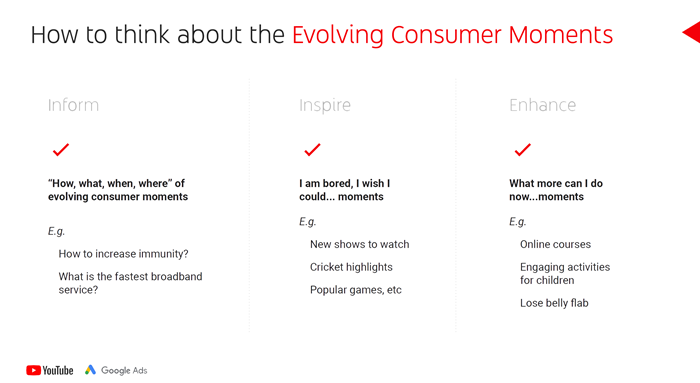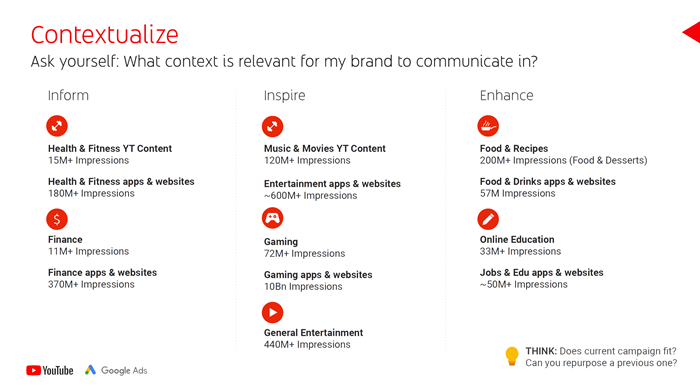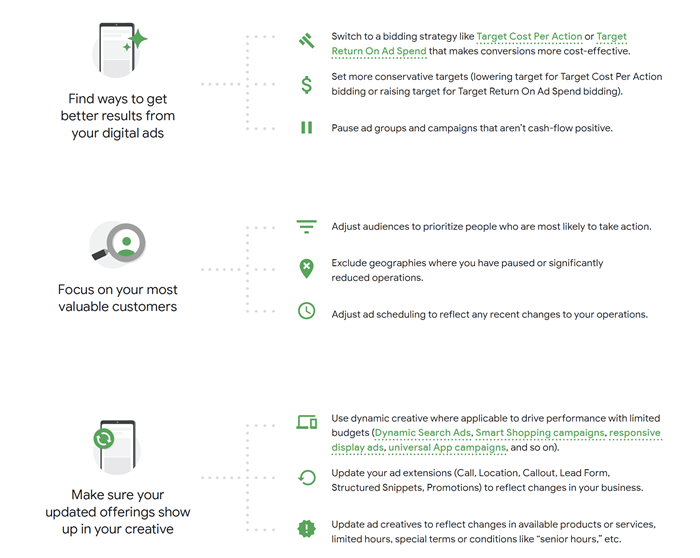5 Media Guidelines To Deal With Covid 19 Outbreak
As businesses find a way through the Covid19 pandemic, consumer behaviour has already evolved at a great speed. As lockdown continues in most parts of the world and society leans into social distancing, consumers are relying and adapting digital media as never before to keep themselves informed, working, learning and entertained. The necessary measures taken to manage the pandemic have altered consumers' expectations, habits, and purchasing behaviour to a significant extent.

Here are some examples of key consumer behaviours across global markets since the onset of Covid19.
1. Recent studies by Nielsen show people working from home daily consume over three more hours of media than before the Covid19 pandemic began. These additional hours include online shopping, indicating a potential market adjustment from hands-on experiential purchasing to fully digitalised and remote spending habits.
2. Recent survey show users are prefering to shop from online ecommerce platforms to avoid crowded public places like shopping centers, malls, stores and shops.
3. As per Conviva’s Covid19 Social and Streaming report, online streaming jumped more than 20% as in last week of April compared to two weeks prior on a global scale, with the Americas contributing significantly, up nearly 27% in the same time period.
4. People that ordinarily didn’t participate in social media are finding it as a way to stay connected and informed. Total views of local news outlets on Facebook were up 247 percent, for an average increase of 118 percent in views per video.
5. Twitter saw a 196 percent increase in average engagement per video and a 63 percent increase in overall engagement with local news accounts. On YouTube, there was a 50 percent increase in engagement (likes, dislikes and comments) for videos.
6. According to Comscore, news websites and apps saw exponential high traffic i.e. nearly 523 Mn visits in a week with a 30.9% weekly growth in visits from January to March.
Looking at the above data, it is high time that businesses must start to anticipate the emerging sentiments of their customers, craft their media strategies to keep their efforts moving forward and build capabilities that future relevance will require. Brands embracing a full funnel campaign approach in order to foster product sales and acquire customers, is perhaps NOT the right strategy to be implemented at this time. The current reality has forced marketers to be far more driven by what people need rather than broadcasting to them in a predefined moment we choose.
This blog encompasses five key media guidelines that can be helpful for brands teams to navigate the ever changing landscape.
1. Mine real-time consumer trends and insights
With consumer behaviour and sentiments changing with new regulations since the onset of the pandemic, it is imperative for businesses to understand the specific customer need from the brand. Seeking feedback and asking questions to consumers directly on social media or on other forums is one of the way to gain valuable insights from local and global markets. Today’s rapid market changes has created massive amount of data making it difficult for brands to find clarity in the noise and determine which trends will empower their decision-making. Leveraging tools like Shopping Insights or Google Alerts, brands can reference real time consumer data to prioritise the most impactful marketing strategies based on critical business goals.
Analysing Search data using tools like Google Trends and YouTube trends are few of the other ways to identify what people are leaning into in this unprecedented times. Tapping into real time consumer trends and unlocking their intent signals can enable marketers to deliver highly relevant and contextual content in that unique moment based on what real people are actually doing. Such data will certainly encourage frequent adjustments in media plans and amendments in communication strategies.
Brands must look at ways to think about the evolving consumer moments. What are the consumers searching for? What are the prioritised business objectives which aligns with the consumer needs? What context is relevant for the brand to communicate in? How can brands be discoverable in a relevant user moment?

2. Keep Contextualising with the Evolving Consumer Moments
Connecting with the world online is critical than ever right now, with at-home media consumption increasing dramatically and permeating all aspects of life. Marketers must understand the context relevant for the brand to communicate in, while planning media. If the consumer intent signal reveals the need for detailed information on specific subjects or topics, brands must align their communication to the most relevant themes or creative categories.
As many consumers shelter in place during the pandemic, consumers want to be inspired by the moments they are missing out on. Entertainment and Gaming categories for example, can be a source of delight and prove to be useful for such consumers. For users willing to enhance or upskill on various subjects, can be targeted with communication categories like online courses, education, food recipes and many more. Google India provides a framework showcasing various communication themes and affinities based on user needs and evolving consumer trends.

3. Choosing the Right Advertising Strategy
No matter which situation the business is facing, determining brand’s priorities is key. At this time, brands must even contemplate pausing all advertising campaigns if the business is experiencing severe supply-and-demand volatility. Amid several challenges if brands still choose to stay connected to their consumers to achieve their business goals, then marketers must choose the right advertising strategy. Here are some recommendations to help marketers to rethink their digital marketing strategies as they navigate the time of uncertainty.

How can a brand be discoverable in a relevant user moment? What should be the discovery points for consumers who’re looking for solutions and ideas? What are the consumers watching in a leaned-in mode? What content is being browsed or consumed frequently on various apps and websites?
It is imperative for marketers to identify what channels are relevant to different consumer needs and trends. For example, DIY tips, online learning can be promoted across various inventories available on websites and apps which feature relevant topics. Discovery for entertainment related content can be promoted across social media and video streaming channels. It is critical for brands to align communication channels with their prioritized business objectives.
4. Constant Reevaluation & Leveraging Creative Pre-testing
As market dynamics are changing rapidly, it is prudent for brands to keep reassessing campaigns, creatives, landing pages and content on owned assets. Reassessing every possible touchpoint for brands, from a paid social media ad post to an automated email campaign, is crucial at this point of time. From copy and keywords to creative tone and visual imagery, the context of media buys needs to be carefully assessed.
As far as communication strategies are concerned, it is important for brands to understand how every ad campaign across paid and owned channels are being perceived tonally, especially during times like these. Marketers must keep asking themselves these questions with every campaign, no matter the channel or size of spend behind it. A minor mistake can have a lasting impact on brand image. Remote pretesting for all new creatives remains a critical aspect for brands.
"We’re re-evaluating creative that shows interactions like hand shakes, hugs, and high-fives, since social distancing is an important tactic for slowing the spread of illness. We’ve also reviewed all our Search ad copy to spot phrasing that’s now awkward — “virus checks,” for instance, have taken on a whole new meaning in light of this moment." — Joshua Spanier, Global Marketing VP for Media, Google
5. Speed, Agility and Transparency is the way to go
As businesses grapple with continuous challenges pertaining to rapid and frequent regulation changes, agility and transparency becomes the key when it comes to addressing user needs at the time of crisis. Brands must rapidly change focus, reprioritise and remain resilient in order to deliver helpful and relevant experiences to its consumers.
From tweaking creative ad copies to changing budgets and channel mix, media teams need to embrace frequent changes and adjustments in their plans. Instead of continuing a well planned, full funnel campaign strategy running in an auto optimization mode, teams need to be mindful of the opportunity cost involved and the resources deployed in the marketing program. With pressure on discretionary marketing spends, media teams need analyse campaign performance more frequently and collaboratively in order to detect the underperforming channels or creatives in the campaign and quickly pull out the plug to gain efficiency.
"The more agile we can be, the better we can address our users’ needs and deliver helpful information and experiences." — Matthieu Peller, Founder and Head, Google’s Growth Lab
The Bottom Line
Businesses must realise that the normal processes of running a campaign can be quite effective in normal circumstances, however systems facilitating automated digital campaigns are not built for the level of strain and pace which the marketing world is currently facing. It is the time when brands need to be extra careful and innovative at the same time. Some of the many successful brands are being mindful, empathetic and helpful in their communication to deliver informative and helpful consumer experiences. Just by adding a humanitarian layer to a marketing communication and offer will only strengthen the brand and build post COVID-19 loyalty. On the other hand, many marketers are being over-cautious around eliminating media wastage and tracking return on investment with high immediacy.
This is a challenging time for all businesses. No one certainly has all answers to navigate these turbulent times, however learning from continuous experiments and monitoring how other brands are responding, can help discover new directions to a brand’s marketing approach. Moreover agility in the marketing ecosystem hasn’t been easy for most businesses, however it is important to realise that agility is the new growth and a primal driver to weather this pandemic.